Discover the learning platform powered by collaborative learning.
A 15-minute discussion with an expert
100% tailored to your needs - with ❤️
No commitment. Free as can be.
A rocky start to a new job has expensive consequences. 20% of employee turnover happens within 45 days, and the cost of each one of those resignation letters ranges from one-half to twice the employee’s annual salary, depending on the role.
These losses are staggering but not surprising, considering only 12% of employees agree their organizations do a great job onboarding new hires. The takeaway? A strong employee onboarding program (and the onboarding template you use to create it) is worth its weight in gold. The same is also true for user onboarding.
What makes strong onboarding? The objective, at its most basic, is to bring new hires “on board”: Your focus is to lift new hires out of an ocean of ambiguity and onto your ship. There, they can meet the captain and crew, see where the ship’s heading, and “learn the ropes” to help you get there.
Effective onboarding is necessary for every organization, but there’s no one-size-fits-all solution—if there were, we would give you one onboarding template instead of 31. But onboarding programs succeed when they answer specific questions about your organization and the new hire’s role, like “What defines our company culture?” “What’s our performance review process?” “What is this role’s workflow like?”
“Not everyone’s situation is the same, and your onboarding process needs to reflect that.” – Raphaël Moutard, senior engineer at Spendesk
The best onboarding programs work because they’re specific and uniquely relevant to your company and your new hire. But that doesn’t mean you need to build yours from scratch.
Onboarding templates provide structure and inspire ideas; they’re a great starting point and can easily be tweaked. We’ve rounded up a collection of diverse, high-quality onboarding templates and checklists (you can grab our favorite, below) from around the web—alongside some of our best onboarding tips and tricks—to help you design your own.
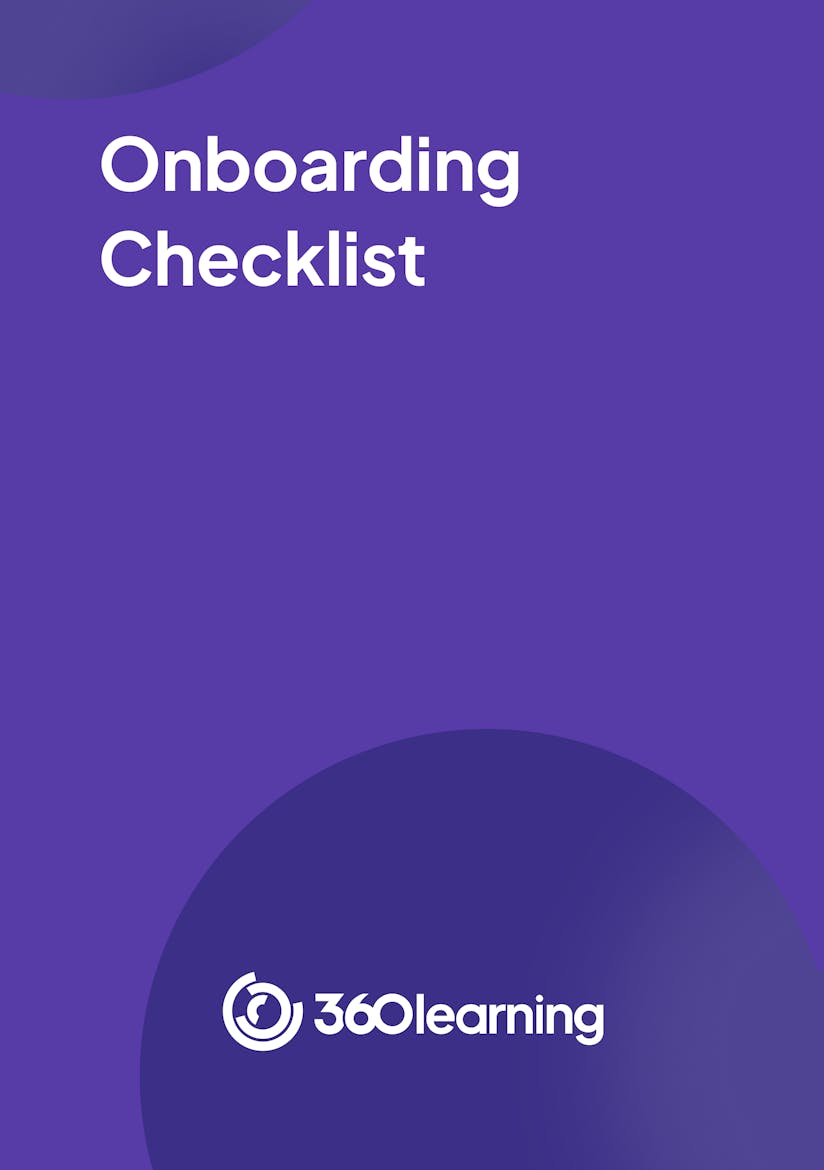
By providing your contact info, you agree to receive communications from 360Learning. You can opt-out at any time. For details, refer to our Privacy Policy.
Onboarding should be tailored to each new hire, but there are some universal elements.
For the most part, every onboarding program should:
At 360Learning, for example, each new hire’s onboarding is built around a standard outline of key goals and checkpoints. At the same time, we leave room to tailor the process for each new hire and give them the flexibility to shape their own learning process. You can learn more about how we structure onboarding at 360Learning in our ebook, here.
This is a snippet of our onboarding process template for each new hire. It helps us ensure all incoming employees get a full introduction to 360Learning’s core tenets, but leaves wiggle room for onboarding managers to customize:
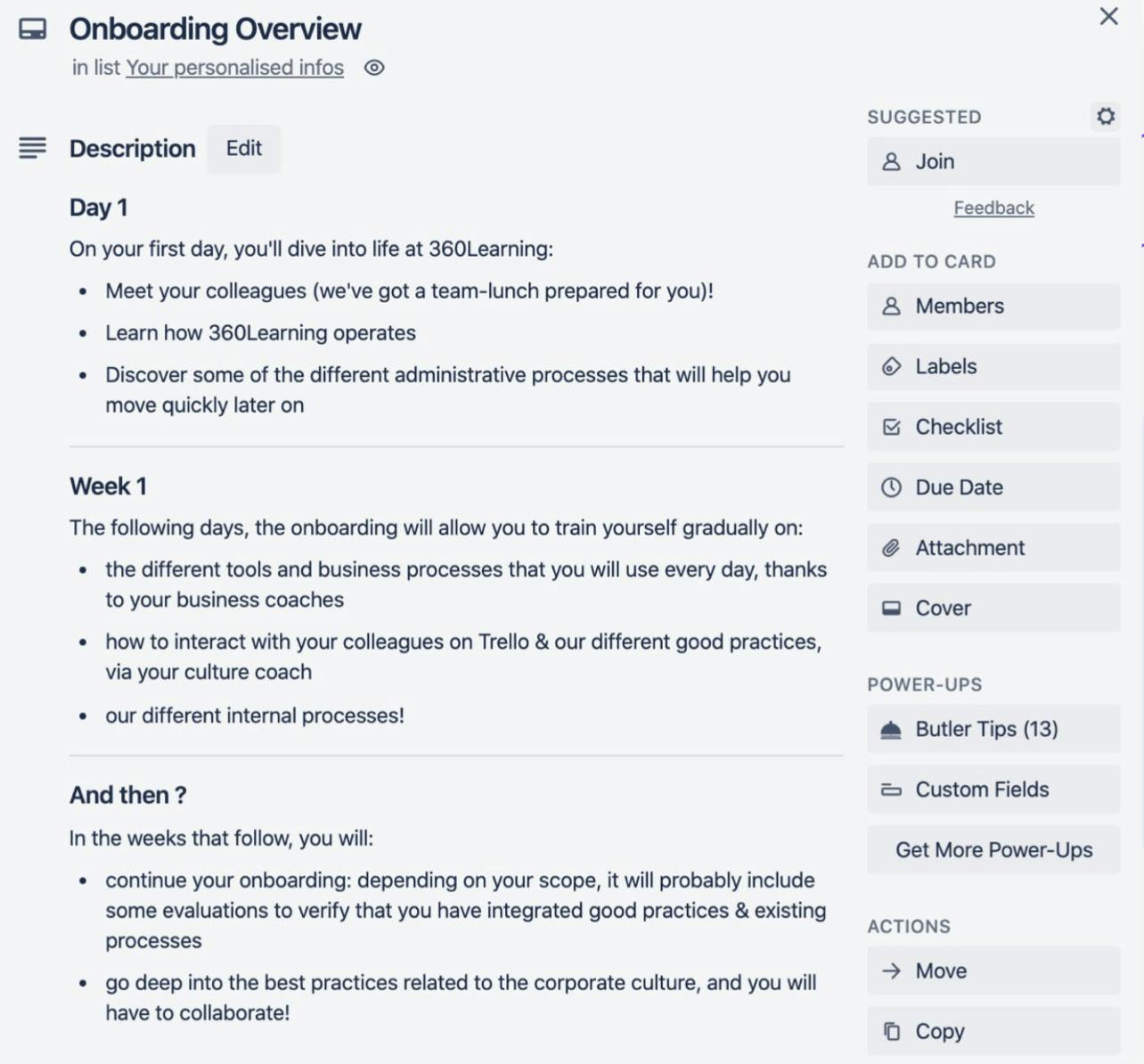
Whether you’re building an onboarding program for the first time or giving it a refresh, use these general onboarding templates to get a feel for the structure and essential elements of onboarding, whether it’s getting ahead of new hire paperwork or a welcome email.
The average manager gets their first leadership training at the age of 42, about a decade after becoming a manager. We’ve written about how manager training is undervalued and ineffective, and manager onboarding is no exception.
Onboarding managers is important for two major reasons: First, management requires a strong set of soft skills that may not have been needed or refined in the manager’s previous role. Second, their performance has a compounding impact. They organize teams and projects, set communication standards, and have a high impact on employee satisfaction and engagement.
For example, we highly value continuous feedback and conduct performance reviews for each of our employees, starting at onboarding. We document and lay out the process on Trello to ensure new hires, especially coaches (managers), understand how performance reviews are done at 360Learning:
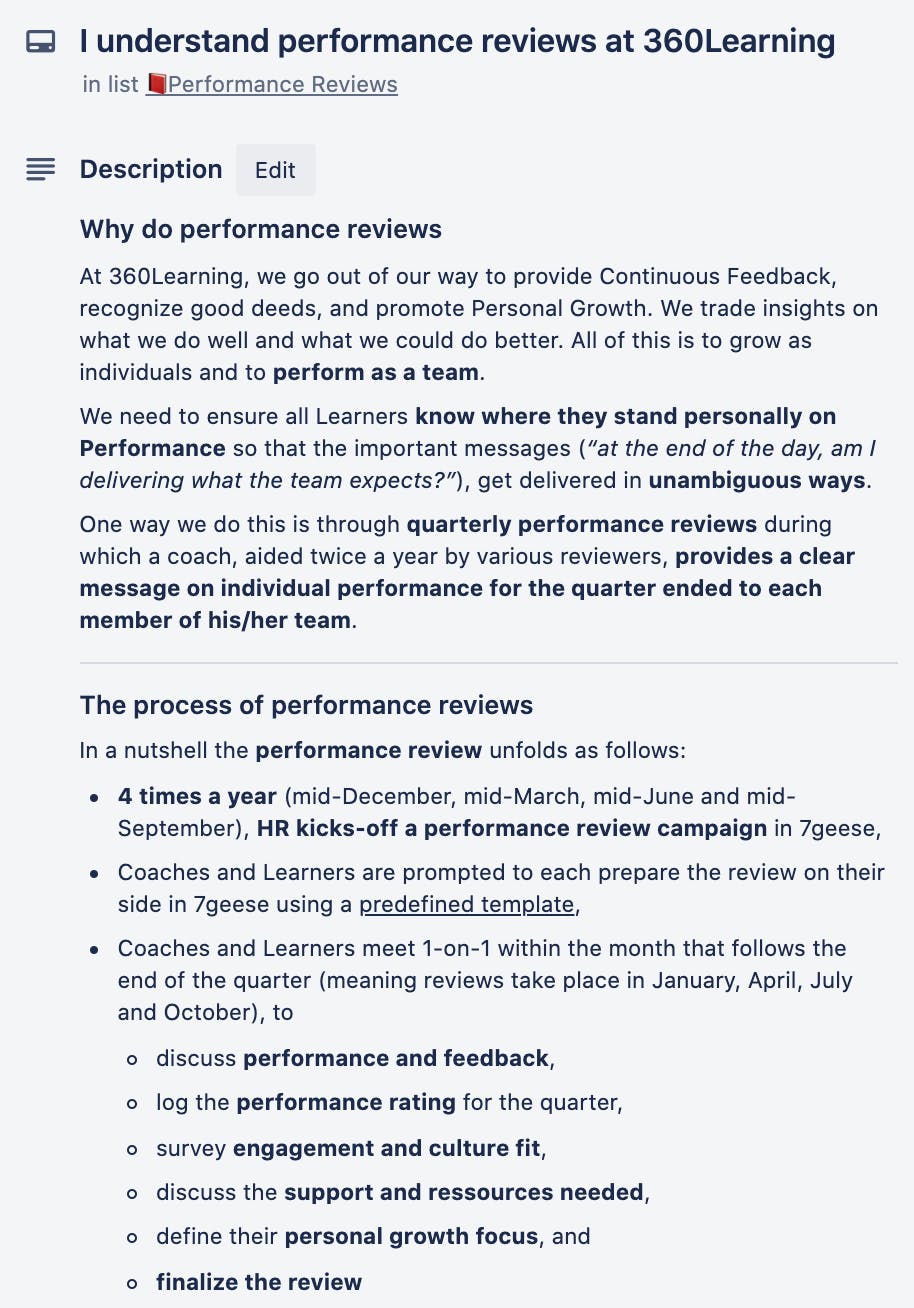
Check out the following manager onboarding templates and new hire checklists to get an overview of essential concepts for incoming managers.
Sales teams have very unique cultures and, accordingly, unique training needs.
One of the biggest challenges of onboarding salespeople—from new reps to account executives—is providing a 360-degree view of the company. There are many onboarding tasks for sales reps—they need to be trained on product (features and use cases), marketing (pitches and messaging), leadership (company mission and strategy), and, of course, sales (emails, calls, and other enablement tactics).
The roadmap for each new hire on our sales team’s onboarding process looks a little different, but we have a standard track to ensure nobody falls behind:
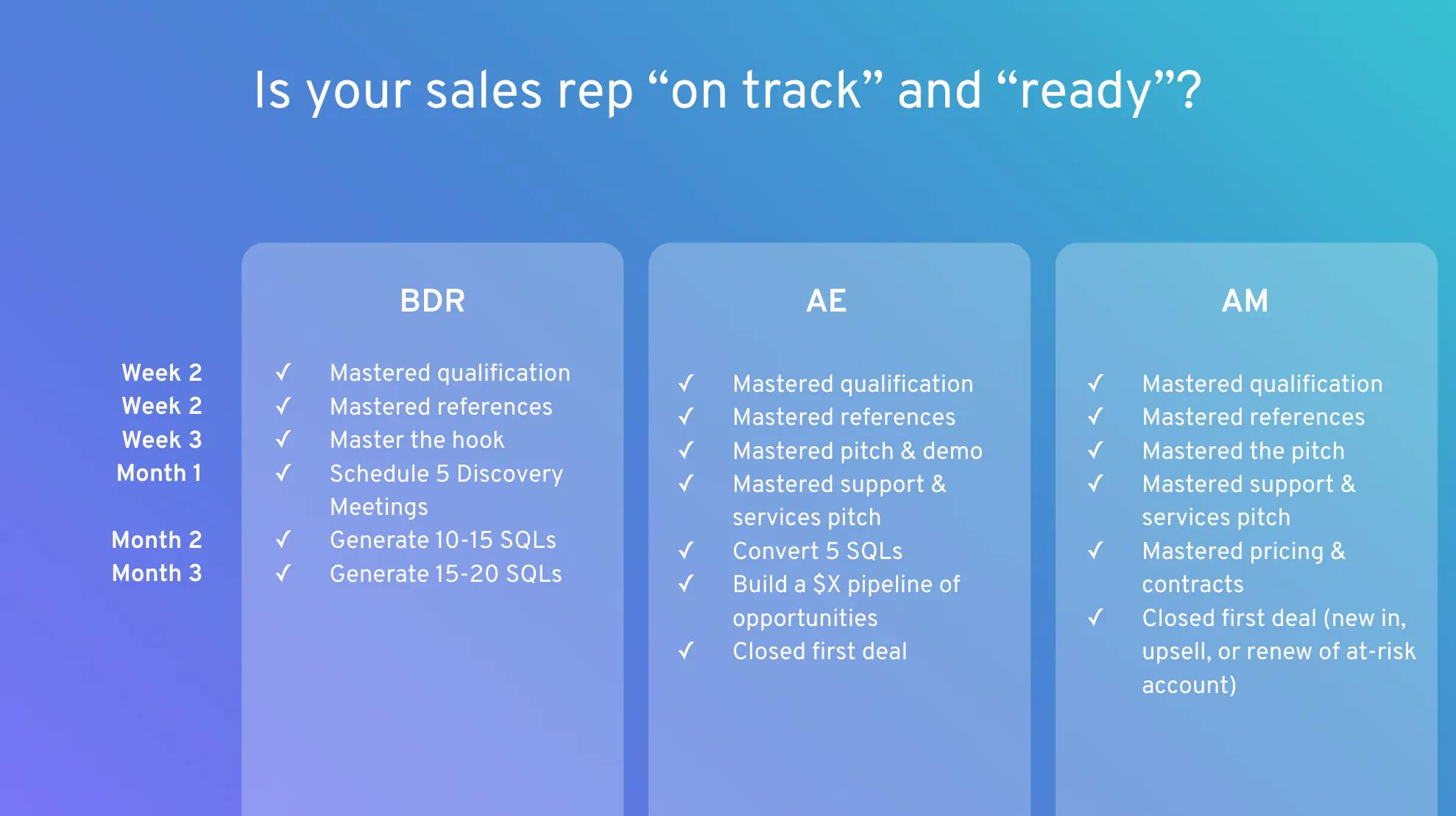
We use peer learning to leverage institutional knowledge from team members throughout the company. During onboarding and beyond, new hires and existing employees develop a healthy exchange of information, which helps us identify skill gaps and iterate courses in real time.
“The best thing that you can do for the business and for the [sales] rep is to limit the amount of time they spend struggling in role.” – Michael Hoy, acting managing director EMEA at Pendo.io
Onboarding new employees can be incredibly time-consuming and repetitive for sales leaders, so we blend asynchronous training activities, social learning, and individual coaching to give new hires a well-rounded, cost-efficient onboarding experience. Use these templates and checklists to help design your own sales onboarding process:
During onboarding, developers need to learn architectures and codebases—made more difficult by whacky legacy codes and poor process documentation—on top of the universal challenges of a new job.
Developer onboarding, especially in a startup work environment, is all about accelerating time to performance. For some, the best answer is a steady ramp-up period, while others prefer throwing new devs into the deep end. Regardless of the pace of your onboarding process, keep devs on track by focusing on team in addition to tech.
At 360Learning, collaboration is central to even our most technical roles. According to research from Learning Solutions Magazine, 50–80% of workplace learning happens through informal peer-to-peer exchanges, which is why we built our business around collaborative learning. Devs, like all roles, have regular touchpoints and continuous feedback with coaches to identify personal goals and OKRs. Finally, each new hire is given an onboarding buddy outside of their team in addition to role-specific course tracks to ensure a thorough, supportive, and collaborative onboarding experience.
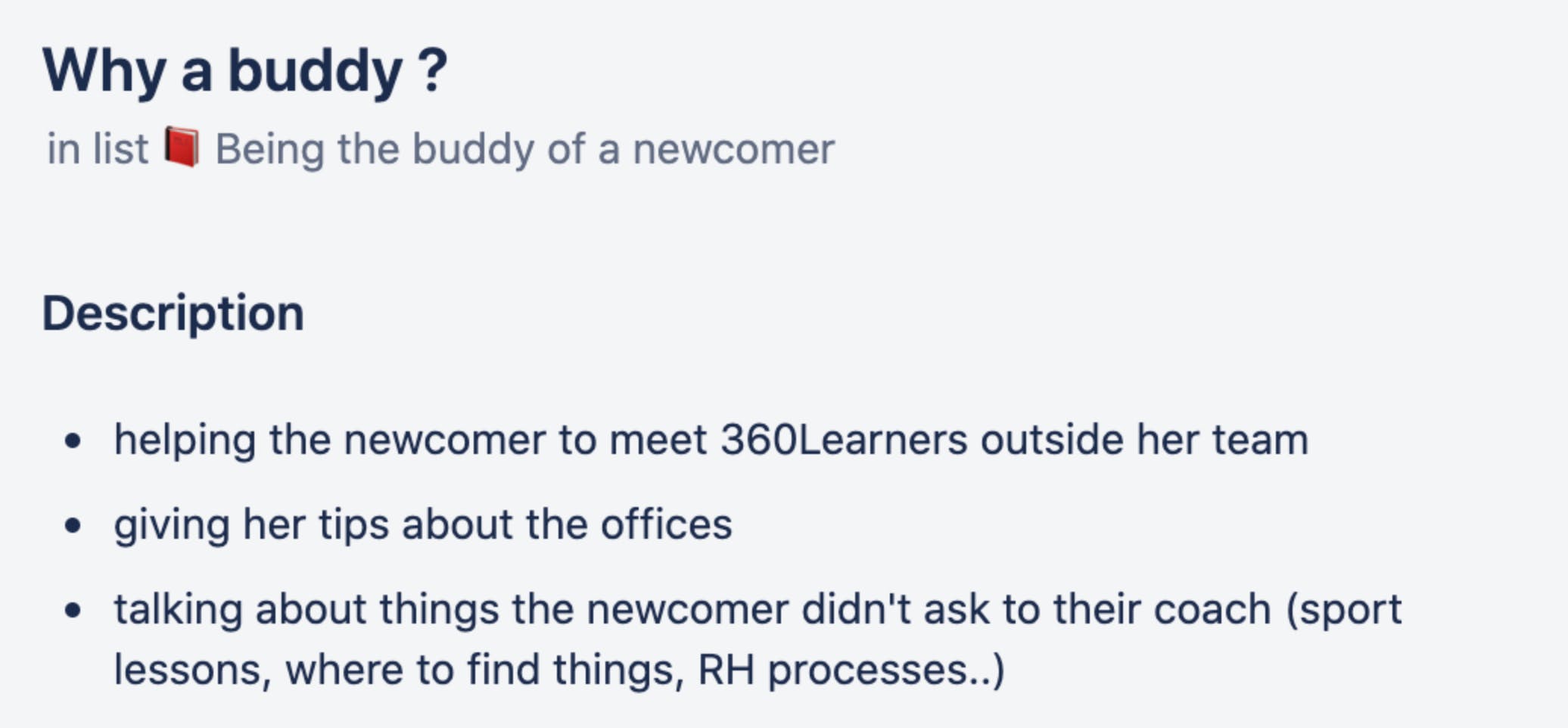
More resources on how other companies approach developer onboarding:
New hires often experience friction while getting the hang of tools and software they must use to do their jobs. Prepare tech and provide regular support during onboarding to avoid headaches and wasted time.
Lessen the tech burden on new employees by setting up user profiles—email, communication and productivity tools, learning platforms, and other software—in advance. Organization is key: Use calendar invites to streamline the entire onboarding process and an organization tool like Trello to help onboarding managers and new hires stay on track during onboarding.
Trello helps us break the complex onboarding process into smaller, more manageable tasks. It also allows us to assign tasks to different team members and keep them accountable:
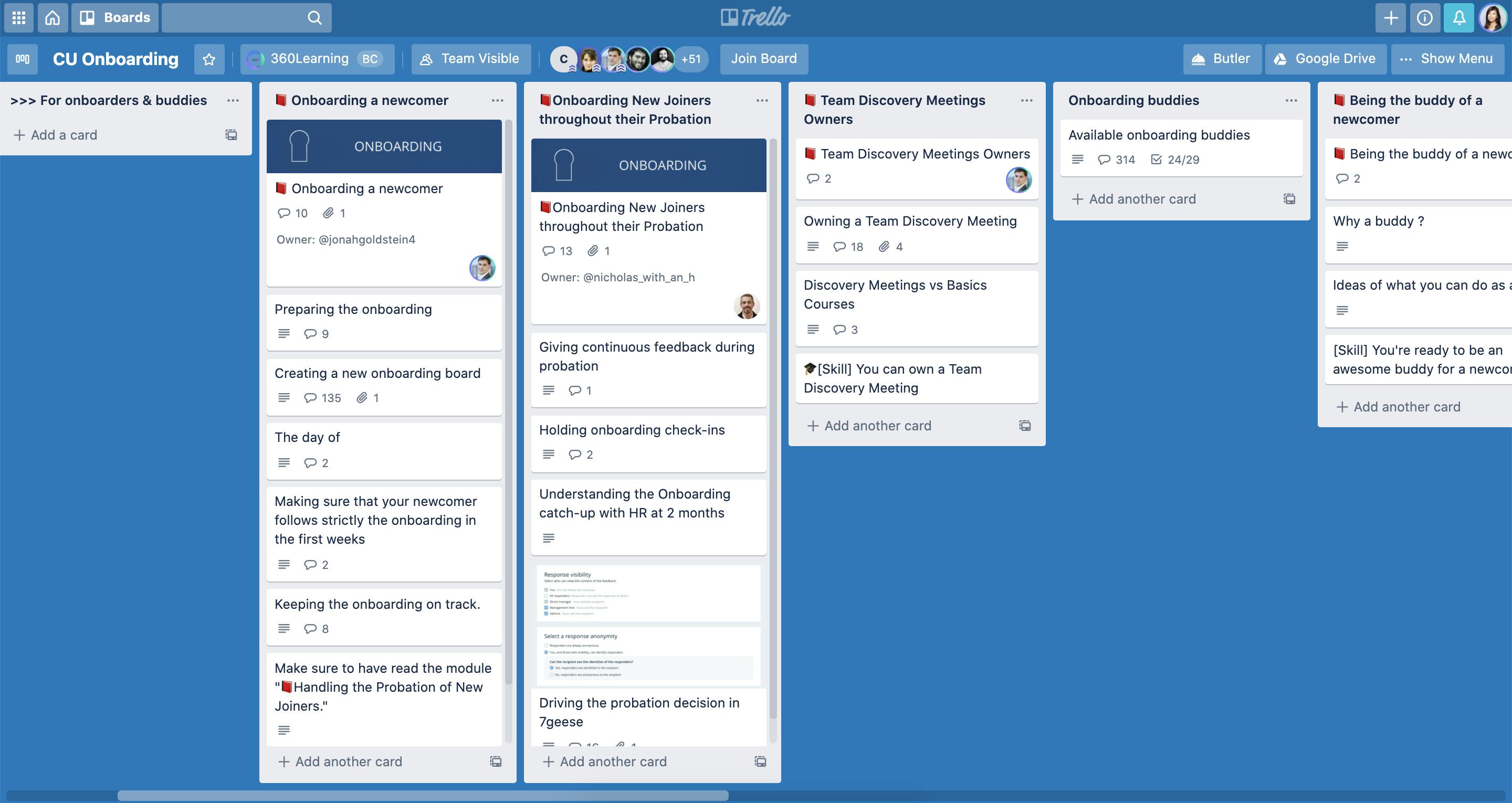
Here are a few onboarding templates and checklists to get a handle on IT for onboarding:
Developing a great onboarding process is already a challenge. Moving that process behind a screen is another altogether—one we’re all facing head-on since the emergence of COVID-19.
The goals of onboarding stay true even when remote; achieving those goals just requires new tactics. Even from home, new hires should be immersed in company culture and community during onboarding, developing those channels of learning and support. The major difference is that there are fewer spontaneous opportunities: Without valuable watercooler chats, especially for new hires trying to get the lay of the land, you have to facilitate collaboration virtually.
On our blog, you’ll find 6 Steps to a Great Remote Onboarding Process – and What to Avoid. Use those strategies along with the following onboarding templates and checklists to build your own remote onboarding process.
Onboarding is a valuable time to show—not just tell—new employees the ins and outs of your company’s culture and values.
At 360Learning, for example, we bake our culture of collaborative learning into everything we do from day one. We encourage new hires to embrace peer training and asynchronous work because it’s how we find success. This initiation isn’t always straightforward: Different organizations thrive on different cultures, so it’s not unusual for new hires to experience an adjustment period. Nevertheless, we use the onboarding period to set expectations and instill good habits to help new hires succeed at our company in the long run.
There’s also, of course, a specific course about our culture, Convexity, included in day one of our onboarding:
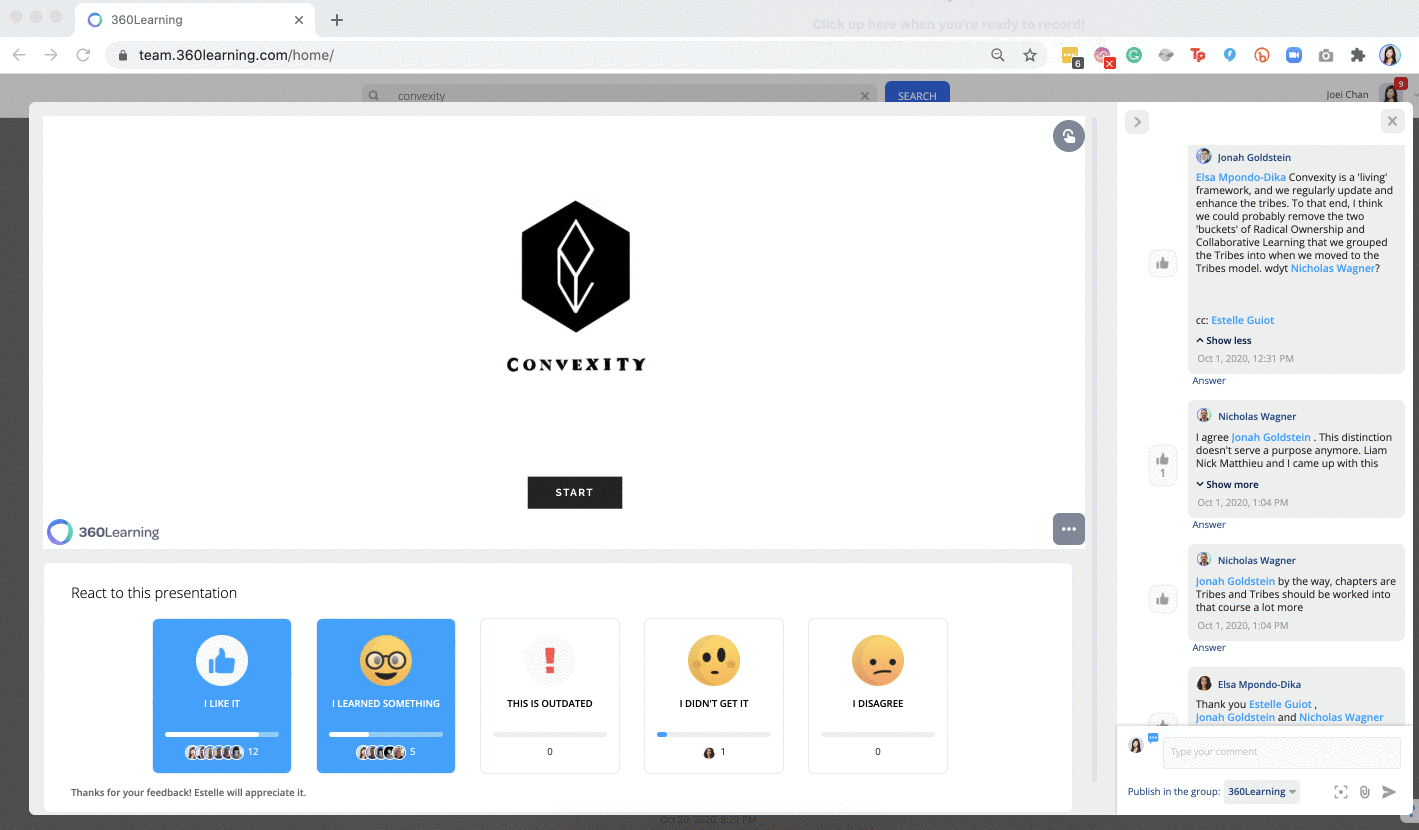
Take time to align your onboarding process with your company’s unique culture. Use these resources to get started:
For many companies, the biggest barriers to deploying a great onboarding program are funding and executive buy-in.
Win the fight against skeptical leadership and tight budgets by developing a solid onboarding plan and highlighting its ROI. With these onboarding templates, you’re one giant step closer to solidifying a unique onboarding plan. Next, check out How to Get Training Budget and Exec Buy-in for L&D Projects for more info on getting the green light.
Need more help with designing a great onboarding program? Download The Onboarding Playbook we swear by, or get your free demo to see our platform in action:
A 15-minute discussion with an expert
100% tailored to your needs - with ❤️
No commitment. Free as can be.
By providing your contact info, you agree to receive communications from 360Learning. You can opt-out at any time. For details, refer to our Privacy Policy.